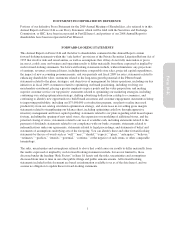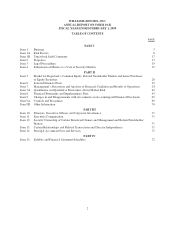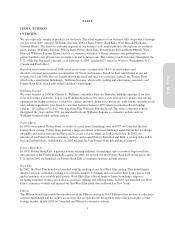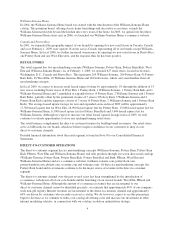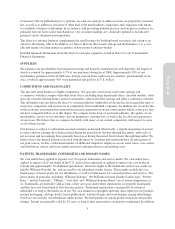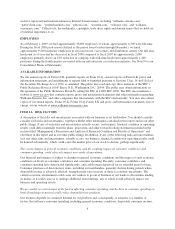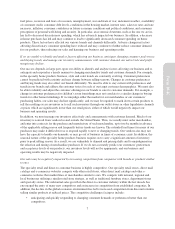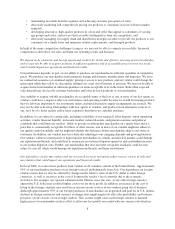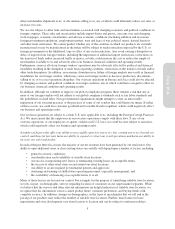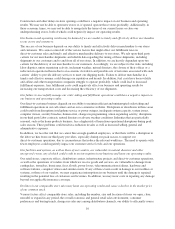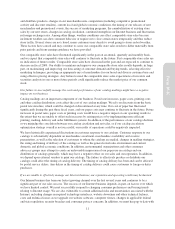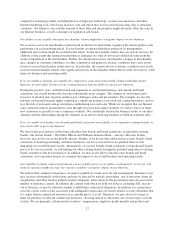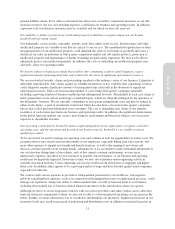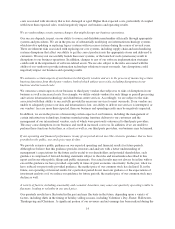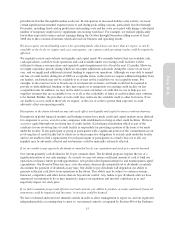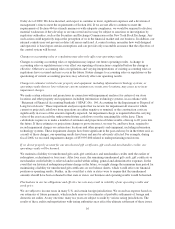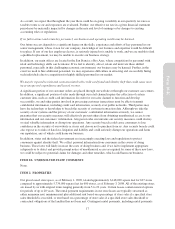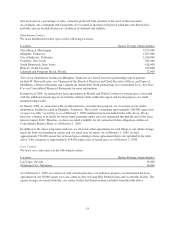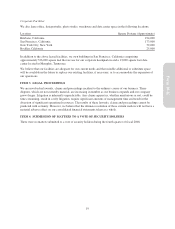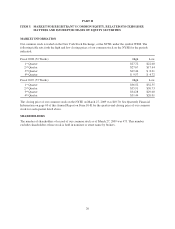Pottery Barn 2008 Annual Report Download - page 22
Download and view the complete annual report
Please find page 22 of the 2008 Pottery Barn annual report below. You can navigate through the pages in the report by either clicking on the pages listed below, or by using the keyword search tool below to find specific information within the annual report.Construction and other delays in store openings could have a negative impact on our business and operating
results. We may not be able to open new stores or, if opened, operate those stores profitably. Additionally, in
these economic times, we may not be able to renegotiate the terms of our current leases or close our
underperforming stores, both of which could negatively impact our operating results.
Our business and operating results may be harmed if we are unable to timely and effectively deliver merchandise
to our stores and customers.
The success of our business depends on our ability to timely and effectively deliver merchandise to our stores
and customers. We cannot control all of the various factors that might affect our fulfillment rates in
direct-to-customer sales and timely and effective merchandise delivery to our stores. We rely upon third party
carriers for our merchandise shipments and reliable data regarding the timing of those shipments, including
shipments to our customers and to and from all of our stores. In addition, we are heavily dependent upon two
carriers for the delivery of our merchandise to our customers. Accordingly, we are subject to the risks, including
labor disputes, union organizing activity, inclement weather, natural disasters, the closure of their offices or a
reduction in operational hours due to an economic slowdown and possible acts of terrorism associated with such
carriers’ ability to provide delivery services to meet our shipping needs. Failure to deliver merchandise in a
timely and effective manner could damage our reputation and brands. In addition, fuel costs have been volatile
and airline and other transportation companies struggle to operate profitably, which could lead to increased
fulfillment expenses. Any fulfillment costs could negatively affect our business and operating results by
increasing our transportation costs and decreasing the efficiency of our shipments.
Our failure to successfully manage our order-taking and fulfillment operations could have a negative impact on
our business and operating results.
Our direct-to-customer business depends on our ability to maintain efficient and uninterrupted order-taking and
fulfillment operations in our call centers and on our e-commerce websites. Disruptions or slowdowns in these areas
could result from disruptions in telephone service or power outages, inadequate system capacity, system issues,
computer viruses, security breaches, human error, changes in programming, union organizing activity, disruptions
in our third party labor contracts, natural disasters or adverse weather conditions. Industries that are particularly
seasonal, such as the home products business, face a higher risk of harm from operational disruptions during peak
sales seasons. These problems could result in a reduction in sales as well as increased selling, general and
administrative expenses.
In addition, we face the risk that we cannot hire enough qualified employees, or that there will be a disruption in
the labor we hire from our third party providers, especially during our peak season, to support our
direct-to-customer operations, due to circumstances that reduce the relevant workforce. The need to operate with
fewer employees could negatively impact our customer service levels and our operations.
Our facilities and systems, as well as those of our vendors, are vulnerable to natural disasters and other
unexpected events, any of which could result in an interruption in our business and harm our operating results.
Our retail stores, corporate offices, distribution centers, infrastructure projects and direct-to-customer operations,
as well as the operations of vendors from which we receive goods and services, are vulnerable to damage from
earthquakes, tornadoes, hurricanes, fires, floods, power losses, telecommunications failures, hardware and
software failures, computer viruses and similar events. If any of these events result in damage to our facilities or
systems, or those of our vendors, we may experience interruptions in our business until the damage is repaired,
resulting in the potential loss of customers and revenues. In addition, we may incur costs in repairing any damage
beyond our applicable insurance coverage.
Declines in our comparable store sales may harm our operating results and cause a decline in the market price
of our common stock.
Various factors affect comparable store sales, including the number, size and location of stores we open, close,
remodel or expand in any period, the overall economic and general retail sales environment, consumer
preferences and buying trends, changes in sales mix among distribution channels, our ability to efficiently source
10



